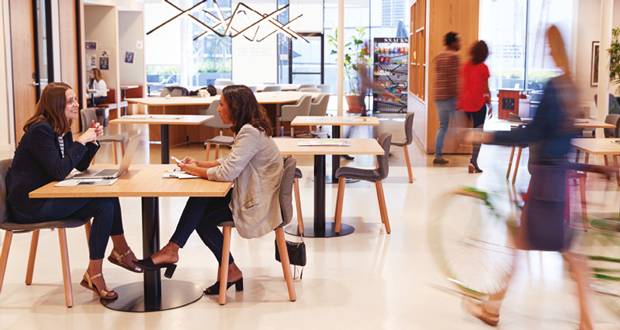JLL’s 2025 Global Consumer Experience Survey reveals how shifting spatial experience preferences are poised to reshape the built environment.
The global survey of 12,000 consumers across 19 markets and 64 cities uncovers that while consumers are increasingly drawn to AI-enabled environments, many are also seeking moments of respite from constant digital engagement, reflecting a desire for technology that works quietly in the background, enhancing rather than replacing, human connection.
While over 60 per cent of consumers say they like to visit technology-free spaces as a digital detox, they also express strong support for AI-enabled spaces. Seventy-two per cent of global respondents agree that cities should be digitally enabled, 67 per cent say they like to use the latest technologies in day-to-day life, and the same percentage believes AI integration into city infrastructure will significantly improve their future urban experience. The findings say JLL suggest a clear opportunity for developers, investors, and occupiers to design spaces that deliver high-quality, human-centric experiences while using AI to remove friction, reduce screen time, and create more intuitive environments.
Lee Daniels, Global Growth and Innovation Lead, JLL said: “The paradox between wanting to unplug while simultaneously embracing AI and technology-enabled spaces is one of the most compelling consumer dynamics we’ve seen emerge. It’s not that people are rejecting technology, they’re rejecting bad technology. This reflects consumers’ desire for intentional technology integration spaces that feel personal, frictionless, and connected without requiring constant screen time. This presents an opportunity for real estate developers to create intelligently integrated environments where technology operates invisibly.”
The survey demonstrates the growing influence of the experience economy in shaping real estate developments, a trend outlined in JLL’s inaugural 2024 Consumer Experience Survey. This year, 74 per cent of consumers globally expect cities to offer new experiences, and 69 per cent are willing to pay a premium for high-quality experiences, up from 64 per cent in 2024. Convenience and safety are top two factors preferred for experience in the built environment, followed by wellness, uniqueness and fun – highlighting the need for developers and occupiers to increasingly deliver dynamic and high-quality amenities without compromising on basic factors of accessibility and functionality. Walkability and proximity to amenities also remain critical, with 74 per cent saying it is important for their local neighbourhood to be walkable, with access to amenities within 15 minutes of their home.
Health and wellness are increasingly driving consumer decisions with 71 per cent of respondents agreeing on the importance of living in a healthy city and 68 per cent ranking health and wellness as an important factor in influencing their choice of place for varying activities, wellness continues to fundamentally reshape real estate decisions.
While healthy building standards have increased in recent years, there is a need for greater investment in wellness amenities, biophilic and health-focused design, and the consideration of green environments in location strategies for real estate to stay current and meet expectations of consumers, tenants, and occupiers. Seventy-seven per cent of full-time workers surveyed think green spaces near their workplace improve wellbeing, and 64 per cent of consumers choose to visit, shop, and socialise in places that have greenery and natural materials. Moving forward, the integration of wellness features will no longer be a nice-to-have amenity, but an essential component of competitive real estate offerings, says JLL.
Peter Miscovich, Executive Managing Director, Global Future of Work Leader, JLL commented: “Over time, employees have been overwhelmed by a proliferation of building and workplace applications originally intended to enhance amenities, services, and daily work activities. The volume and complexity of digital workplace technologies in aggregate have now produced an adverse negative employee reaction to overly digitised work environments. AI enabled workplace solutions ideally should operate quietly in the background—anticipating individual needs, supporting health and wellbeing – while reducing the human administrative burden. AI also should function as an invisible, human-centered platform that delivers positive workplace experiences and should seamlessly curate spaces, personalise services and foster meaningful social connections that really matter. We need human-centric AI-enablement that helps to lower stress and creates more positive workplace experiences and not overwhelming technology that only adds more human stress and creates negative workplace experiences.”
Personalisation has also emerged this year as a key priority for consumers. While it has become increasingly common in products and retail in recent years, we’re now seeing personalisation translate into broader expectations on places and spaces, as 66 per cent of respondents choose places that align to their personal values over convenience or price.
JLL says as it manifests in real estate, this trend emphasises a greater focus on human interaction within spaces, broader choices in amenities as people select spaces aligned with their values and lifestyles, and the intentional use of technology to enhance activities and interactions. For example, 68 per cent expect shops and retail spaces to provide more than just products (e.g., customer events, in-store experiences, etc.), and furthermore, 59 per cent of respondents like to use innovative digital technology, like AI-powered apps, to book entertainment or travel, but 65 per cent prefer to shop in person rather than online, highlighting the importance of face-to-face interactions. At the same time, 63 per cent believe that AI integration in entertainment venues and spaces will enhance experiences by making visits more personalised and enjoyable.
JLL states that real estate must consider how it can use a combination of technology, brand strategy, and space/events programming to create hospitality-focused spaces, with welcoming environments and human interaction, for more personal and memorable experiences.
The 2025 findings show that future‑proof developments must integrate technology in ways that enhance – not replace – human connection. Design integration should include experience strategists in development teams from project conception, not as an afterthought, with a focus on creating social infrastructure that facilitates meaningful human interaction alongside traditional building functions. This must be supported by flexible infrastructure, including robust technology backbones, modular layouts, and lease structures that encourage tenant experimentation and evolution.
A community‑centered approach will also be essential, working with urban planners and community stakeholders to ensure new developments enhance, rather than fragment, existing social networks. Success should be evaluated not only on traditional financial metrics, but also on a project’s capacity to create social connection and deliver experiential value.
Daniels added: “The built environment is no longer just a backdrop – it’s an active participant in people’s lives. The winners in this next chapter will be those who understand that people want both the calm of a tech‑free moment and the convenience of AI – and can deliver both in the same space.”
Facilities & Estates Management Live will open its doors on 7th and 8th October at the Business Design Centre in London.
Brought to you by the people behind the Facilities Management Journal (FMJ), visitors can tour the exhibition stands featuring some of the leading FM service providers & product suppliers as well as enjoy a lively seminar programme.
There are two concurrent speaking schedules at the show: A series of KEYNOTE talks from thought leaders in FM and the built environment and a series of INNOVATION presentations from key suppliers in the market.
The programmes have been compiled by FMJ in consultation with members of the FMJ editorial steering group who represent client side FMs from a range of sectors, including public sector, not for profit, professional services and healthcare.
Securing your free pass and fast entry to the show couldn’t be easier, simply click here.





